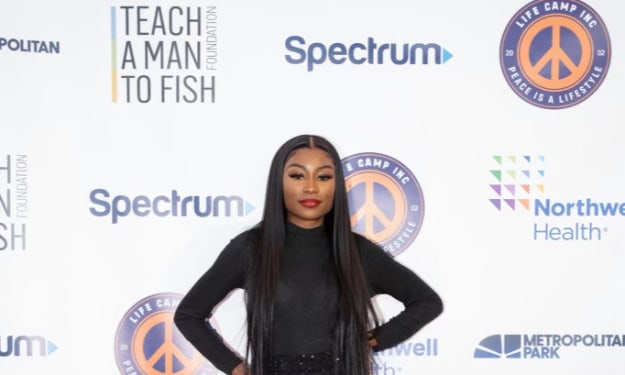5 Timeless Street Dance Styles Across Africa
From Southern Africa to the East and West, numerous dance styles have taken the continent and the world by storm in recent years. Despite the rise of music genres like Afrobeats and Amapiano, African street dance styles continue to evolve and thrive.

In Africa, music and dance go hand in hand, influenced by our rich cultural heritage. These dance styles not only accompany the vibrant music produced across the continent but also contribute to the songs' massive popularity, especially on social media. With their infectious energy and unique flair, these dances capture the true spirit of Africa, often outlasting the songs that inspired them.
From Southern Africa to the East and West, numerous dance styles have taken the continent and the world by storm in recent years. Despite the rise of music genres like Afrobeats and Amapiano, African street dance styles continue to evolve and thrive. Let's explore five of our favorite street dance styles from across the continent:
1. Leg Work/Zanku (Nigeria): It's impossible to discuss contemporary Nigerian pop music without mentioning the dances that have shaped it. The Leg Work/Zanku era remains unforgettable. Originating in Nigeria, this dance style gained popularity through street hop artists like Zlatan and Naira Marley. The fast-paced, rhythmic movements involve various parts of the body, including the legs, hands, and chest. While newer dances have emerged, Leg Work/Zanku remains a go-to move on the dance floor.
2. Kupe/Pilolo (Ghana): The Kupe Dance song by Ghanaian-UK-based artist A-Star sparked the creation of the kupe dance steps by Incredible Zigi in 2018. Within days, the dance went viral on social media, with dancers worldwide participating in online challenges. Incredible Zigi later introduced the Pilolo dance, borrowing the name from a popular hide and seek game in Ghana. The dance gained global attention when Janet Jackson performed it on The Tonight Show starring Jimmy Fallon in 2018.
3. Amapiano Dance (South Africa): South Africa gave us the iconic Gwara Gwara dance a few years ago, popularized by DJ Bongz's hit single "Ofana Nawe." Amapiano, which took center stage in 2019 and throughout the 2020 pandemic, has since produced trending dance moves like "the pouncing cat," "Zekethe," "Dakiwe challenge," and the famous "Mlando" dance move. Amapiano dance has become one of the most popular afro dance styles in 2022.
4. Odi Dance (Kenya): Odi Dance is a Kenyan dance style associated with the youth. It was initiated by gospel professional dancer and artist Timeless Noel, Hype Ochi, and gospel dancehall artist Jabiddi to attract more young people, especially those in low-income neighborhoods, to the gospel of Christ. The dance has become a sensation not only in Kenya but across the entire African continent.
5. Ndombolo (Congo): Ndombolo is a popular afro dance style originating from the Democratic Republic of the Congo, prevalent in Central and East Africa. This dance involves captivating waist, hip, and leg movements. Artists like Koffi Olomide and Awilo Longomba popularized the Ndombolo dance in the 90s, and it continues to thrive and evolve with the times.
These five street dance styles represent the diverse and dynamic dance culture across Africa, showcasing the continent's rich musical and rhythmic heritage.
Contemporary African dance represents the urban expression of African dance forms. As African populations migrated to multi-ethnic urban centers and encountered new cultures, traditional dances underwent transformation. However, traditional dances continue to thrive in rural areas during traditional ceremonies. Urban living has given rise to a plethora of new dance forms.
When traditional African dances are brought onto the stage from their original village context, several aspects change. In traditional African dance, dancers engage with the community, interacting with singers, musicians, and participants. On stage, these dances often incorporate new elements, adapting to the new performance setting and situation.
Colonialism and the formation of nation-states have significantly influenced African society, leading to the development of new dance forms within new social contexts. As borders shifted under colonial rule and labor migrations were prompted by cash economies, people carried their dances with them. Migrants from different ethnic groups found themselves living next to neighbors with distinct dance styles. In urban areas like South Africa, rural migrants gathered and dance forms became markers of ethnic origin and identity. In the Witwatersrand gold mines, for example, teams of "mine dancers" competed, organized based on their ethnic backgrounds.
Following World War II, hybrid dance forms emerged, blending traditional African dances with European and American influences. High life, the most renowned of these forms, combined European ballroom dance techniques learned by soldiers abroad with traditional rhythms and forms. High life music and dance gained popularity in West African cities during the 1960s, transcending ethnic boundaries to express a shared regional identity shaped by colonialism and urbanization. In southern Africa, people danced to the modern African beat of kwela in discos, while in Central and East Africa, "Congo beat" music became popular.
The modern transformation of Africa has fostered incredible creativity and diversity in dance forms. Dance remains a vibrant and evolving part of African life, ranging from improvised traditional performances to ritual ceremonies and the vibrant nightlife of dance halls and discos. Modern African dance embraces both continuity and innovation. It can be classified into dance clubs and dance companies, although this categorization excludes dance forms derived directly from African traditions.





Comments
There are no comments for this story
Be the first to respond and start the conversation.